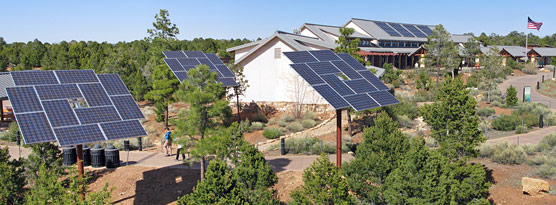Blockchain: Revolution or Business as Usual?
WHAT IS BLOCKCHAIN?
The term “blockchain” describes a type of internet-based decentralized ledger system which can be used to record transactions and store data in a manner potentially more secure than one might find in a centralized database system. Blockchains are managed using peer-to-peer (p2p) sharing methods, very similar to BitTorrent. Information stored on a blockchain can be shared across a network through encryption and cross-authentication.
Blockchain will change many aspects of how economies function and develop more transparency and accountability within governments, as well as further decentralize information among individuals, companies, and institutions. The future of blockchain technology is a vast open-ended arena that will likely expand our collective intelligence far beyond previous technologies. The potential for blockchain to alter global society has attracted the attention of technologists and developers, cooperatives and venture capitalists, the FBI and people outside the law, and almost every world government and banking institution. Currently many sectors of society are fertile ground for experimentation and testing of blockchain applications.
“Blockchain Project Ecosystem” [new blog post] https://t.co/QgHpbkUvdo
— Josh Nussbaum (@josh_nussbaum) October 13, 2017
CRYPTOCURRENCIES & ECONOMICS
To date, blockchain and other distributed ledger technologies are most known for being a part of the core functionality of Bitcoin and most other cryptocurrencies (sometimes called altcoins). These all currently operate free from the influence of the central banking systems that issue and work with government-backed fiat currencies.
On January 1, 2018, the total value (market capitalization) of all cryptocurrencies reached $700 billion USD, surpassing the total valuation of many large corporations such as Amazon.com. Cryptocurrencies remain a volatile investment due to quickly changing supply and demand conditions on cryptocurrency exchange markets, the potential of pending government regulations, or even outright bans in some countries, among other reasons.
As government surveillance powers expand, economic imbalance grows while massive human migration continues around the world. Now, at this unique juncture in human history, the demand for secure cross-border transactions is higher than ever. Blockchain technology is playing a little-known, yet large, role in shaping how our global society adapts to these issues. (The United Nations has even used the Ethereum blockchain to send emergency aid to refugees in Syria.)
Today, you can easily exchange Bitcoin and altcoins back into any major fiat currency (traditional state currencies backed by central banks), and vice versa. People are quickly adopting the use of cryptocurrencies in order to make purchases, ranging from Expedia flights to domain names and 3D printers.
While Bitcoin does offer a higher degree of security, it is only pseudonymous, even if using it in conjunction with the Tor network. Through careful analysis of metadata within the transaction it is still possible in some cases to track Bitcoin users. This has led to the development of privacy-based altcoins like PIVX, Verge, Monero, ZCash, and Dash (among others), which prioritize secure digital transactions, free from government and corporate surveillance while keeping the users’ identities more private by obscuring the path of transaction.
Activist communities have developed projects like FairCoin, a cryptocurrency using blockchain which operates on a proof-of-cooperation mechanism instead of proof-of-stake, and formulates strategy and decision making through monthly assemblies. Supported by a global cooperative movement, FairCoin hopes to enable a more fair economy internationally.
Another cryptocurrency known as NEM, or New Economy Movement, is maintained by a non-profit organization that brings new features to blockchain such as proof-of-importance, multisignature accounts, and encrypted messaging.

BANKING & BLOCKCHAIN
Banking institutions plan to deploy blockchain technology within their networks to secure account information, reduce labor costs by reducing human jobs, and increase transaction speeds. On the flipside, a handful of banks that can read the writing on the wall are rushing to create centralized cryptocurrencies they can control, of which Ripple is a flagship project.
The creation of centralized cryptocurrencies by large banking insitutions has angered many of the original supporters of cryptocurrency, since Bitcoin was seen by its earliest advocates as a way to decentralize wealth out of the hands of the fractional-reserve-banking old world order and into the wallets of the greater global community.
The sudden rise in cryptocurrency market prices in late 2017, combined with the flourishing culture and industry surrounding decentralized computing and blockchain technology, caused large institutions to take notice. As governments scramble to regulate cryptocurrencies in order to crack down on money laundering and criminal activity, many large banking institutions are simultaneously making every attempt to stifle growth of blockchain-based cryptocurrencies that challenge their longstanding grip over electronic transactions and creation of wealth within society.
In January of 2018, Visa announced it would stop processing all cryptocurrency-based transactions, stating that the digital asset does not qualify as a payment system. This month Metropolitan Commercial Bank also attempted to sabotage the rapidly expanding cryptocurrency movement by halting international wire transfers related to all cryptocurrencies.
BLOCKCHAIN USES IN GOVERNMENT
Governments around the world, including China, South Korea, and Russia (to name just a few) have begun cracking down on the unregulated use of cryptocurrencies. The French Finance Minister Bruno Le Maire and U.S. Treasury Secretary Steven Mnuchin have recently stated that global regulations of cryptocurrencies, and perhaps even the underlying blockchain technology, will be at the top of the list of discussions during the next G20 Summit in Argentina in late 2018.
Meanwhile, the government of Brazil is contemplating using blockchain technology to process petitions and write laws using the Ethereum network. Blockchain technology could also be used to transform voting and elections using secure identity management. In the near future, voting could be more transparent, more secure, and make election fraud much harder to pull off.

TRANSFORMING ENERGY INFRASTRUCTURE
In parts of North America and Europe, individuals and companies are experimenting with applying blockchain technology to develop smart grids which could share sustainable energy between homes and businesses. When more electricity is produced than needed, the energy can be distributed over a connected grid and the sender can gain credit on their utility bill through the blockchain network, which provides authentication and audit trail for each transaction.
In South America, Venezuela’s President Nicolás Maduro was even planning to launch an oil-backed cryptocurrency, “The Petro”, using blockchain technology. However, days before its launch, the National Assembly of Venezuela declared the move illegal, citing that Maduro was attempting to “evade financial sanctions, openly violating the Constitution, and legitimizing illicit transactions.”
CHANGING HEALTHCARE
Many healthcare providers will also soon begin to utilize distributed ledger technology. Using blockchain applications, patients, doctors, and hospitals will be able to more quickly and securely share medical records, provide diagnosis, and set permission controls required to see information. Some hospitals and healthcare companies plan to use blockchain technology to secure HIPAA compliance through key pair systems to safely share data. Techniques such as homomorphic encryption would permit analysis of encrypted data, without releasing sensitive patient data protected under HIPAA. One day, the healthcare industry may even use blockchain to share medical research on distributed ledgers processed using artificial intelligence.

BETTER CYBER SECURITY
Some technologists have begun developing new messenger services, such as Hush Messenger, e-Chat, and Obsidian, which aim to secure the metadata of users through blockchain storage instead of centralized servers (which are often used by governments to track and surveil targets). Since blockchain offers such security by design, without a centralized point of attack, users are capable of communicating securely even while being exposed within a hostile environment. Instead of users defending their boundaries from attack, blockchain resists attack by leveraging the network’s asymmetrical advantage of outnumbering the attackers.
Guardtime is another organization that is using blockchain technology to enhance cyber security by creating a Keyless Signature Infrastructure (KSI) to secure sensitive data. Recently Guardtime was awarded a $1.8 million dollar contract with the Defense Advanced Research Projects Agency (DARPA) to advance protection of sensitive military data.
CHANGING ONLINE MEDIA
In the coming years, blockchain is also expected to expand into online media, changing the fundamental ways in which users produce and share media and creators protect their content. Blockchain will likely change the way journalists, photographers, musicians, and writers manage rights, distribute, and monetize their content. This distributed ledger technology could also change how users stream online media, purchase digital copies, and access paid news websites and blogs.
The commercial media market may see blockchain-based advertising networks evolve into general use soon. Blockchain-based techniques are being used to develop new internet browsing tools that by default allow the user to decide what ads they see (if any), avoid tracking, and choose what data they share. The “Basic Attention Token” is intended to let advertisers purchase ad slots, and reward Web and app users for observing advertising.
REVOLUTIONIZING IOT
An “Internet of Things” (IoT) device is any computing device that connects wirelessly to a network and has the ability to transmit data, such as your smart phone, Amazon Echo, or a smart car. There are currently billions of IoT devices connected to the internet and growing every day.
Today, these devices connect to centralized clouds to download updates and communicate across networks. This communication architecture creates bottlenecks and a single point of failure. Centralized cloud services to support IoT devices also costs billions of dollars to build and maintain. Major technology and telecommunication companies are now researching ways to utilize blockchain technology in order to develop a decentralized approach to solving these IoT issues, where devices can communicate and support each other.

A Decentralized Autonomous Organization (DAO) is “an organization that is run through rules encoded as computer programs called smart contracts.” Originally proposed by Nick Szabo during the early years of Cypherpunks, DAO’s are now being integrated into distributed ledger technologies, such as the Ethereum blockchain. Controlled by token holders, a single person or entity cannot change the rules.
Decentralized autonomous organization eliminates the need for hierarchical governing structures, freeing itself from centralized computing networks (and even the centralized power of bosses). DAOs are being deployed within some distributed ledgers, cryptocurrencies, and organizations. Examples of DAO’s are ERC-20 tokens, Tron, DASH, PIVX, and Digix.io.
“Blockchain solves the problem of manipulation. When I speak about it in the West, people say they trust Google, Facebook, or their banks. But the rest of the world doesn’t trust organizations and corporations that much — I mean Africa, India, the Eastern Europe, or Russia. It’s not about the places where people are really rich. Blockchain’s opportunities are the highest in the countries that haven’t reached that level yet.” – Vitalik Buterin, Creator of Ethereum
EARLIER BLOCKCHAIN-RELATED TECHNOLOGIES
While the original 2008 technical paper, “Bitcoin: A Peer-to-Peer Electronic Cash System” by Satoshi Nakamoto (PDF) eventually succeeding in launching Bitcoin to the world, the idea of “chaining” ciphers together is significantly older. Cipher block chaining is a predecessor to the modern blockchain concept, as described in a 1980 document from the National Institute of Standards and Technology about the federal Data Encryption Standard (DES), an influential but now-insecure 56-bit algorithm developed in the early 1970s. In Bitcoin’s early years, many observed the similarities between emerging cryptocurrency and two significant technologies: the popular BitTorrent file sharing software / protocol, and git, software designed for developers to manage computer code repositories.
Both BitTorrent and git permitted decentralized and cryptographically validated chunks of data to be passed around multiple users over the internet. Merkle trees, also known as hash trees,
“can be used to verify any kind of data stored, handled and transferred in and between computers. They can help ensure that data blocks received from other peers in a peer-to-peer network are received undamaged and unaltered, and even to check that the other peers do not lie and send fake blocks.” – Wikipedia
BUILDING THE FUTURE
Blockchain will surely agitate the current order of the world. It will also change how we do things such as crowdfunding and gathering charity, to signing up for school classes and sharing transcripts. It will change how humanity stores data on the cloud, how we stock the shelves at grocery stores, and possibly change how governments track firearms and even our identities. Like many previous technologies, the uses of blockchain appear somewhat like a double-edged sword, ranging from the utopian to dystopian. However, the future of blockchain technology is still in its infancy, growing from within a wild frontier. While a more decentralized future is rapidly gaining momentum around the world, what it will look like is still very undetermined. However, one thing is certain: it is up to everyone to build it.
Written by Andrew Neef
Please consider a tax-deductible donation to help sustain our horizontally-organized, non-profit media organization:




